Hamantaschen cookies, traditionally eaten on the Jewish Purim holiday, are triangle butter cookies filled with jam, a canned spread, chocolate, or whatever you prefer. Complete with easy step-by-step folding instructions, you can make these Purim cookies at home!

Jump to:
Why this recipe works
- This hamantaschen cookie recipe is made with a subtly orange flavored buttery sugar cookie dough
- Fill with your favorite flavor of jam, a canned spread (like poppy seeds, prune, or apricot), chocolate chips or Nutella (chocolate hazelnut spread), or whatever filling combination you choose
- There are easy step-by-step directions for how to fold hamantaschen
Are you familiar with the Jewish holiday of Purim?
It celebrates the story of the book of Esther, a story of love, betrayal, and heroism. Purim is celebrated by dressing up in costumes while hearing the story being read aloud. And the villain is such a bad guy, children spin groggers (noisemakers) to drown out his name every time it's read!
There's also giving to charity, general frivolity, and even a bit of adult imbibing. It's a holiday meant for the whole family to enjoy.
And then there are the traditional Jewish cookies called Hamantaschen (aka Hamantashen cookies or Oznei Haman in Hebrew). They're called that because they mock the villain’s hat, or ear, or pocket, depending on the translation you read.
You'll find these jewish triangle cookies in bakeries year-round regardless of faith or geography, and for good reason...they’re delicious!
Purim is a special and fun holiday, and it wouldn't be complete without a few Hamantaschen Purim cookies to munch and share. Rich and buttery, with sweet filling in every bite, these Jewish cookies are a treat any time of year.
⭐⭐⭐⭐⭐
Tried this today and they were DELICIOUS! We made two kinds: jam and chocolate. Was surprised how long they needed to bake for, but it was worth the wait!
- Britt
Recipe Ingredients
You'll need the following ingredients to make this hamantaschen cookies recipe:

Ingredient Notes
The ingredients for a hamantaschen cookies recipe are straightforward: flour, sugar, butter, vanilla, egg, and salt.
Butter: Use a good quality butter as that's the dominant flavor.
Orange zest: Adds a bit of interest and freshness to the cookies. A microplane grater works well here (I also use the same microplane grater for my Lemon Curd and Orange Glazed Cranberry Bread recipes).
Filling: For the hamantaschen filling, you can use your favorite flavor of jam (my favorites are apricot and raspberry), a canned spread, chocolate, or whatever you choose.
See the recipe card for a full list of ingredients and measurements.
Hamantaschen filling suggestions
The star of the show for these Purim cookies is the filling. Choose what you like:
- Jams, jellies, or fruit spreads: Apricot or raspberry jam are popular. Use your favorite jam flavors
- Canned spread: Some commonly available canned spreads are apricot, prune, and poppy seed
- Chocolate: Chocolate chips of any kind (white, milk, semisweet, or dark) or chopped to the size of chocolate chips
- Nut spreads: Nutella (a chocolate-hazelnut spread), peanut butter, tahini, or another nut spread.
You can also get creative with flavor combinations - Tahini & Chocolate? Peanut Butter & Jelly? Let your imagination run wild!
How to make hamantaschen cookies
Step 1: Make the sugar cookie dough
Combine the butter and sugar and cream them together until the mixture is light and fluffy (photo 1). Using room temperature butter is helpful here as it will cream faster and easier. Scrape down the sides of the bowl as needed.

Add in the egg, vanilla extract, and orange zest to the bowl and beat until the mixture is thoroughly combined (photo 2). The mixture may look curdled after mixing, but that's ok.

Mix in the flour and salt on Low speed until the dough is combined and crumbly (photo 3).
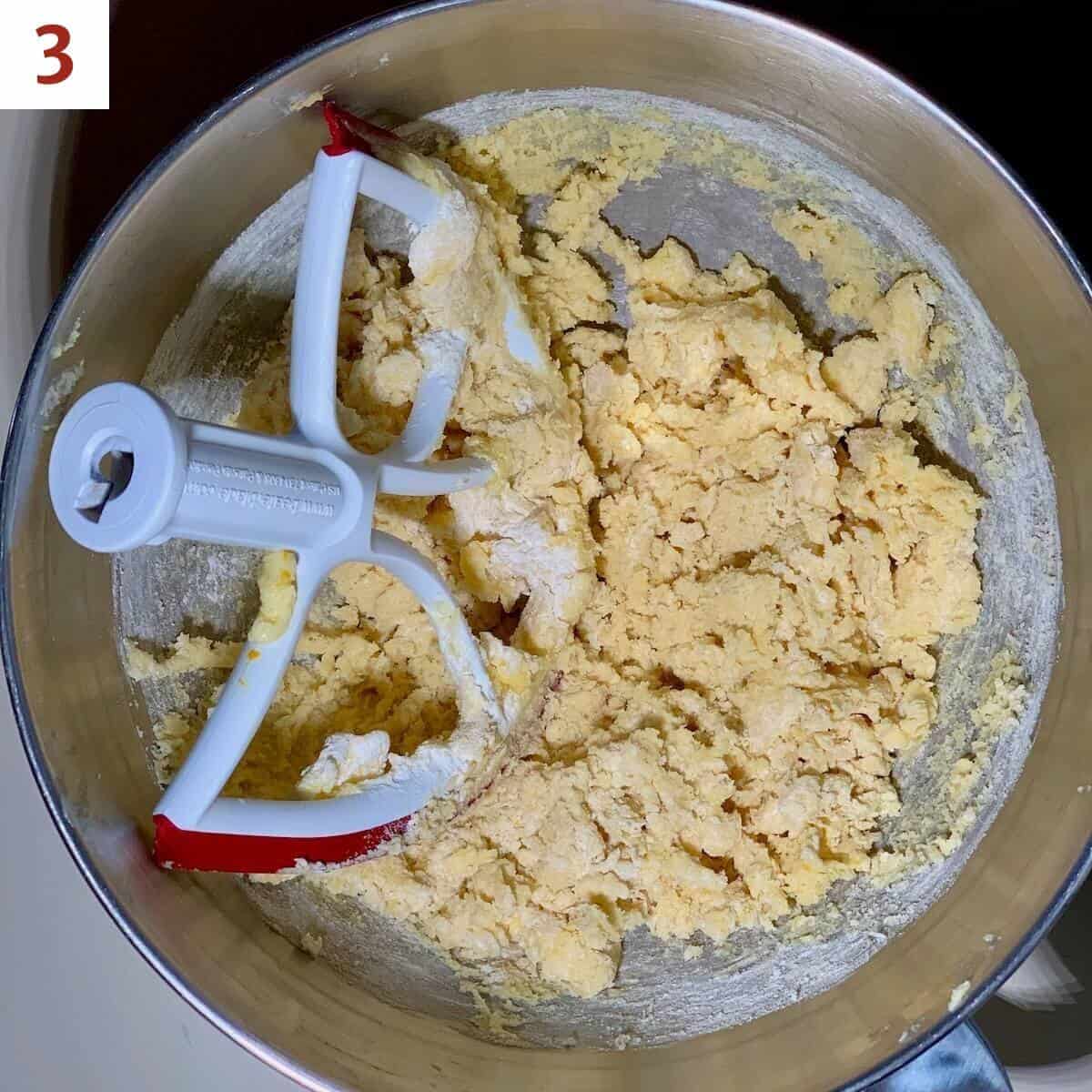
Use your hands to knead the dough into a smooth ball, trying not to overwork it. The dough should be smooth and slightly tacky, but not sticky.
If the dough is too dry, add water slowly in 1 teaspoon increments and knead it into the dough. If the dough seems too wet, knead in 1 teaspoon of flour, again kneading gently until the dough reaches the right texture.
Flatten the dough into a disk and wrap it in plastic wrap. Chill in the refrigerator for at least 3 hours, or up to overnight (photo 4).

Step 2: Cut the dough circles
Line a half sheet baking pan with a Silpat silicone mat or parchment paper, and have your fillings ready to go.
Roll the dough out to ¼-inch thick on a lightly floured surface. It might be stiff at first and you may need to pound it with the rolling pin to soften it enough to roll out. If large cracks form around the dough edges, just repair them with your fingers as you roll. Use a bench scraper under the dough occasionally to keep the dough from sticking to the work surface, and also lightly flour the rolling pin and surface occasionally to prevent sticking.
Roll the dough to your desired thickness
When the dough reaches ¼-inch thickness, you can either continue rolling out to be closer to about ⅛-inch thick (very thin) or leave it closer to ¼-inch thick. The thinner you roll the dough, the more delicate and crisp the cookies will turn out, but too thin and the dough will tear as you shape them into triangles. Keeping the dough closer to ¼-inch thick will yield a doughy, less delicate texture, but can crack as you shape them.
Bottom line, make sure that the dough is thick enough to hold the filling without tearing or cracking during shaping.
If the dough has become too soft to cut, transfer it to the half sheet baking pan and chill it for 5 minutes to firm up. Cut out as many circles from the dough as you can using a 3-inch round cookie cutter or the 3-inch rim of a glass (you can go larger, but no smaller) (photo 5). Gather the scraps, roll out the dough and cut more circles. Cover the circles with a lightly damp towel while they wait to be filled.

Step 3: Fill the hamantaschen
Place one teaspoon of your chosen filling into the center of each circle (photo 6). Too much filling will cause the hamantaschen to open and the filling to spill out while baking, so don't overdo it.

Step 4: Shape the hamantaschen
Shaping the cookies into triangles requires a little finesse. Done properly, each side of your triangle should have a corner that folds over and a corner that folds under, creating a pinwheel look. The pinwheel shape helps to keep the cookies from opening while they bake. It's also pretty!
How to fold hamantaschen cookies
The first fold: Fold the bottom of the circle upwards towards the center, making a flap covering the lower third of the circle (photo 7).
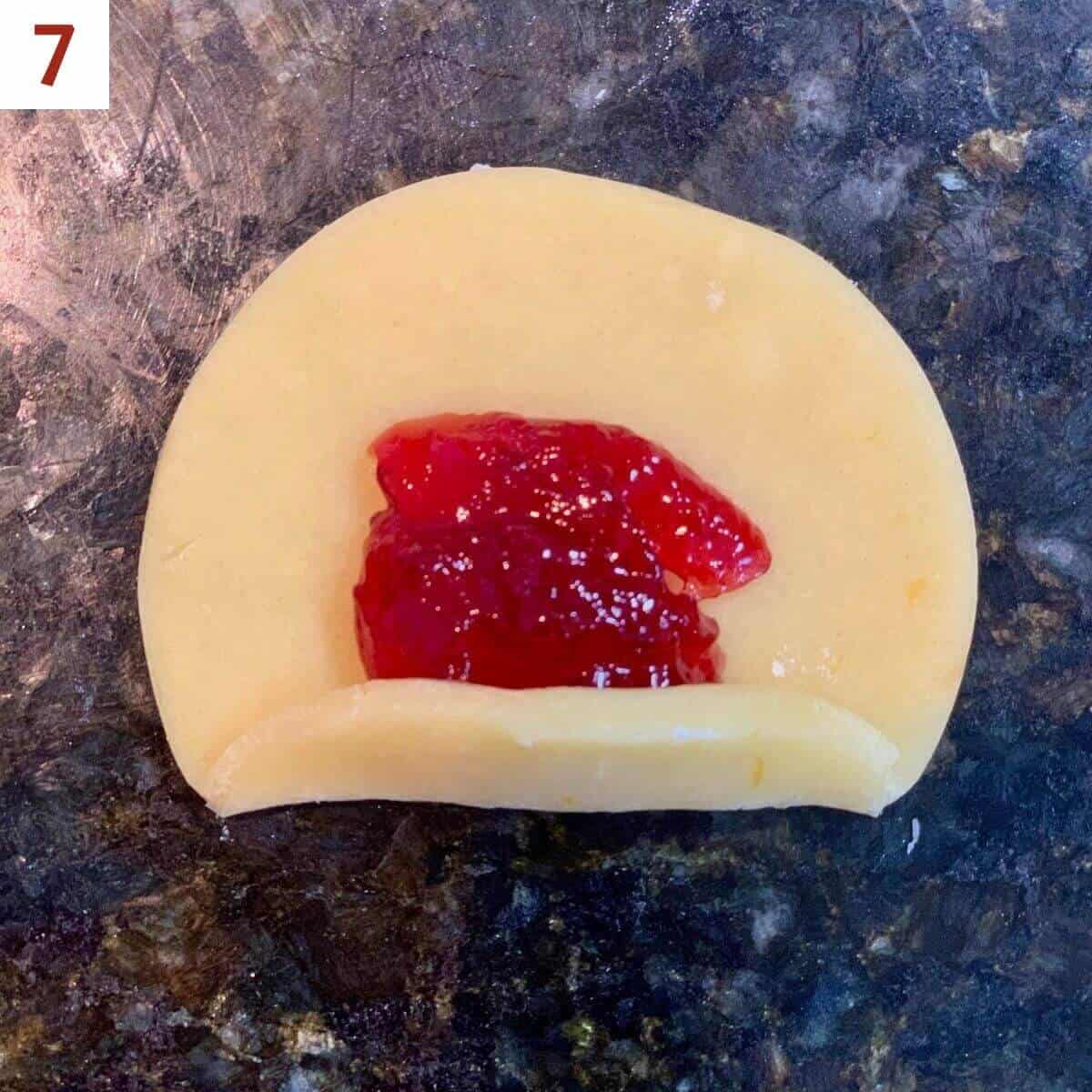
The second fold: Take the left side and fold it towards the center, overlapping the side corner of the bottom flap to create a tip at the bottom left corner of the circle (photo 8). A small bit of filling should still be visible in the center.

The third fold: Take the right side of the circle and fold it towards the center to create a third flap, completing the triangle. Tuck the bottom of this flap under the bottom right corner of the triangle while letting the top of the flap overlap the top corner of the triangle (photo 9).
Press to seal the corners of the triangle gently but firmly to secure the shape. If any cracks have formed at the places where the dough is creased, use slightly wet fingers to smooth them out.

Step 5: Bake the hamantaschen
When all of your hamantaschen have been filled and shaped, place them evenly spaced out on the half sheet baking pan and chill them for about 5 to 10 minutes before baking. Like with all butter cookies, this will help the hamantaschen keep their shape while baking.
Bake the cookies at 350˚F for 15 to 20 minutes, checking after 10 minutes - the dough thickness will affect how long the cookies take to bake. They should be lightly golden brown when fully baked (it may take as long as 25 minutes), so keep checking to prevent over-cooking.
Cool the hamantaschen on a wire rack before serving - the filling will be very hot at first! Enjoy, making as much noise as possible!

Storage and make-ahead instructions
Storage instructions: Baked hamantaschen cookies are best the same day, but can be stored in an airtight container at room temperature for up to 5 days or frozen for up to 3 months
Make-ahead instructions: Unbaked butter cookie dough can be wrapped well in plastic and stored in an airtight plastic bag in the freezer for up to 3 months. Defrost it overnight in the refrigerator, then proceed with shaping.
Keep the cookie dough well chilled
Because these cookies are made from a butter-rich sugar cookie dough, the dough will get difficult to roll out and cut if it's too warm. Therefore, keep the dough chilled throughout the whole process, from making the dough to baking the cookies. Specifically:
- Chill the cookie dough after you've made it.
- Chill the dough after you've rolled it out, before cutting the circles.
- Chill the filled and shaped the cookies before baking them. If you don't chill the cookies first, they will spread out and leak your filling all over. It's not a good look (but still tasty!).
Yup, you'll never be too far away from your refrigerator when you make hamantaschen cookies.

Bottom: well, those weren't chilled, so they leaked during baking
Questions asked and answered
Here are some questions that you might have...
Hamantaschen cookies are triangular-shaped butter cookies traditionally filled with jam (raspberry and apricot are popular), or a spread made of prunes or poppy seeds. But fillings aren't limited to those - you'll find hamantaschen made with chocolate chips, chocolate spread, Nutella (a chocolate-hazelnut spread), or any number of imaginative fillings and filling combinations.
There are many different recipes for hamantaschen, but the most common starts with a butter-rich sugar cookie dough. Some recipes include cream cheese, either instead of or in addition to, butter. Baker's choice.
This hamantaschen recipe yields buttery cookies with a chewy texture, and a subtle orange scent and flavor. This delicious cookie dough can be used for other sugar cookie dough-based, like Cinnamon Roll cookies.
You can substitute another non-dairy fat for the butter in hamantaschen dough to make it dairy-free. And while I haven't done it myself, I've heard of people using a 1-to-1 gluten-free flour substitute with good results.
Recipe

Hamantaschen Cookies
Equipment
- rolling pin
Ingredients
Dough
- ¾ cup unsalted butter, at room temperature, cut into small cubes
- ⅔ cup granulated sugar
- 1 large egg, at room temperature
- 1 teaspoon pure vanilla extract
- 1 teaspoon orange zest, finely grated
- 2¼ cups all-purpose flour
- ¼ teaspoon kosher salt
- 1 to 5 teaspoons water, if needed
Fillings
- jam, any flavor, or other fillings, see Recipe Notes
Instructions
- Make the dough: Combine the butter and sugar in the bowl of a stand mixer (or if using a hand mixer, just a large bowl), and cream them together until the mixture is light and fluffy. Scrape down the sides of the bowl as needed.
- Add in the egg, vanilla, and orange zest to the bowl and beat until the mixture is thoroughly combined. The mixture may look curdled after mixing, but that's ok.
- Mix in the flour and salt on low speed until the dough is combined and crumbly.
- Use your hands to knead the dough into a smooth ball, trying not to overwork it. The dough should be smooth and slightly tacky, but not sticky. If the dough is too dry, add water slowly in 1 teaspoon increments and knead it into the dough. If the dough seems too wet, knead in 1 teaspoon of flour, again kneading gently until the dough reaches the right texture.
- Flatten the dough into a disk and wrap it in plastic wrap. Chill in the refrigerator for at least 3 hours, or up to overnight.
- Assemble the hamantaschen: Preheat the oven to 350 °F. Line a half sheet baking pan with a Silpat silicone mat or parchment paper, and have your fillings ready to go.
- Unwrap the dough disk and place it on a lightly floured work surface. It will be very firm after chilling.
- Roll the dough out to ¼-inch thick on a lightly floured surface. It might be stiff at first and you may need to pound it with the rolling pin to soften it enough to roll out. If large cracks form around the dough edges, just repair them with your fingers as you roll. Use a bench scraper under the dough occasionally to keep the dough from sticking to the work surface, and also lightly flour the rolling pin and surface occasionally to prevent sticking.
- When the dough reaches ¼-inch thickness, you can either continue rolling out to be closer to about ⅛-inch thick (very thin) or leave it closer to ¼-inch thick. See the Recipe Notes for the pros and cons of dough thickness.
- If the dough has become too soft to cut, transfer it to the half sheet baking pan and chill it for 5 minutes to firm up. When it's ready, cut out as many circles from the dough as you can using a 3-inch round cookie cutter or the 3-inch rim of a glass (you can go larger, but no smaller). Gather the scraps, roll out the dough and cut more circles. Cover the circles with a lightly damp towel while they wait to be filled.
- Place 1 teaspoon of filling into the center of each circle. Too much filling will cause the hamantaschen to open and the filling to spill out while baking.
- Shape the hamantaschen: Fold the bottom of the circle upwards towards the center, making a flap covering the lower third of the circle.
- Take the left side and fold it towards the center, overlapping the side corner of the bottom flap to create a tip at the bottom left corner of the circle. A small bit of filling should still be visible in the center.
- Take the right side of the circle and fold it towards the center to create a third flap and completing the triangle. Tuck the bottom of this flap under the bottom right corner of the triangle while letting the top of the flap overlap the top corner of the triangle.
- Press to seal the corners of the triangle gently but firmly to secure the shape. If any cracks have formed at the places where the dough is creased, use slightly wet fingers to smooth them out.
- Bake the hamantaschen: When all of your hamantaschen have been filled, place them evenly spaced out on the half sheet baking pan and chill them for about 5 to 10 minutes before baking. Like with all butter cookies, this will help the hamantaschen keep their shape while baking.
- Bake the cookies for 15 to 20 minutes, checking after 10 minutes - the dough thickness will affect how long the cookies take to bake. They should be lightly golden brown when fully baked (it may take as long as 25 minutes), so keep checking to prevent over-cooking.
- Cool the hamantaschen on a wire rack, then store them in an airtight container. Enjoy, making as much noise as possible!
- Storage instructions: Baked hamantaschen cookies are best the same day, but can be stored in an airtight container at room temperature for up to 5 days or frozen for up to 3 months
- Make-ahead instructions: Unbaked butter cookie dough can be wrapped well in plastic and stored in an airtight plastic bag in the freezer for up to 3 months. Defrost it overnight in the refrigerator, then proceed with shaping.


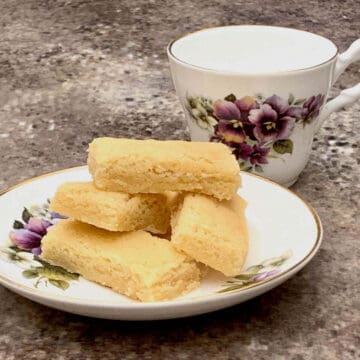
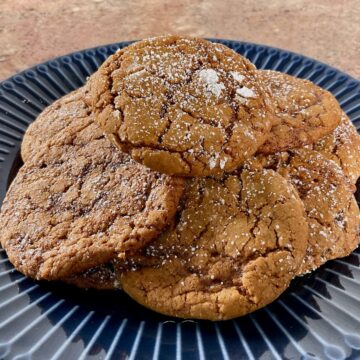
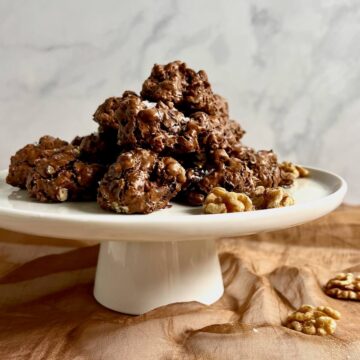



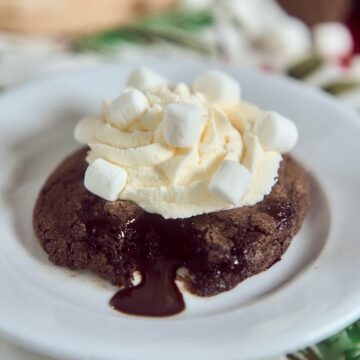
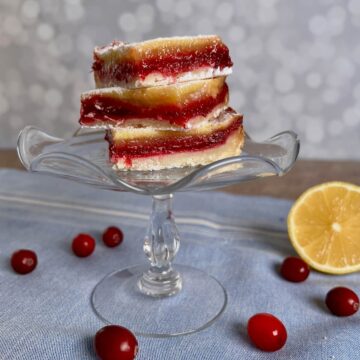


Britt says
Tried this today and they were DELICIOUS! We made two kinds: jam and chocolate. Was surprised how long they needed to bake for, but it was worth the wait
Tammy Spencer says
Hi Britt, I’m so glad to recipe was to your liking! Thanks for sharing 😉